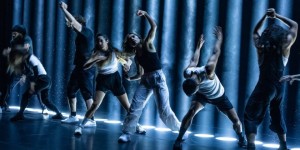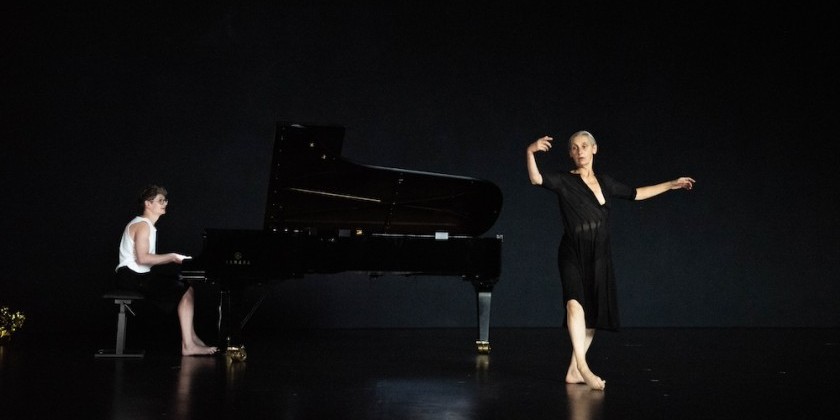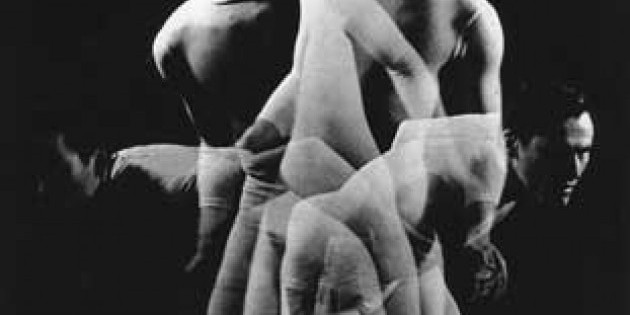IMPRESSIONS: Anne Teresa De Keersmaeker at the Brooklyn Academy of Music

Guest Review by: Stuart Hodes 2008
Editors Note:
The Dance Enthusiast invites all members to contribute reviews of performance they have experienced. You may contribute by logging on to www.dance-enthusiast.com, clicking Reviews, and then filling in the blanks of our user review form
- or -
You may also contribute a more formal write-up to The Dance Enthusiast by sending your review via word document to info@dance-enthusiast.com. We can't promise we will publish, but we will consider your work.
In 1979, Anne Teresa De Keersmaeker, showed me a brand new solo. She'd been at NYU's School of the Arts barely two months, having come from Mudra, Maurice Bejart's school in Brussels, Belgium, whose director, Alan Tung, telephoned urging me to admit her because she was "very creative" and needed to see dance in NYC. Her solo was to "Violin Phase," by Steve Reich. (Hear half a minute of it or buy the whole piece at http://www.last.fm/music/Steve+Reich/_/Violin+Phase). She titled it Fase, shown first to NYU students, then at a college dance festival, then to audiences in her native Belgium. Fase has since grown into a four-part masterpiece. The combination of De Keersmaeker and Reich astonished me then, and after 29 years I remain astonished by the luminous genius of the work I saw and heard in "Steve Reich Evening."
I was also awed by Ictus, her musical group. Having heard Reich exclusively on recordings, I assumed that his intricate compositions were at least partly programmed, only to watch one to six musicians perform them live, forcing me to reconsider the limits of the human brain, which in a favored few contains "perfect pitch." To describe what I heard as "perfect rhythm" is no exaggeration.
The objective was deftly laid out in Pendulum Music. From the flies hung two 30-plus foot lines: a dancer drew them back, released them, and at the bottom of each arc, they passed over charged plates to produce electronic moans. One of the lines was an inch or two shorter, so it's cycle was shorter by a fraction of a second. The time between moans separated, widened, opposed, then approached and came together again, repeating as the swings lost momentum. But driven by laws of nature, the timing remained exactly the same.
Marimba Phase brought out the dancers, who surrounded the music with joyous rhapsodic dancing. I kept looking from them to the two musicians, both intensely concentrated on their instruments, one leaning stiff-legged over the marimba bars, the other with knees bent, body pulsing to the beat, as the notes and the dancers echoed and chased, contrasted and meshed to create an intricate musical-kinetic fabric.
Piano Phase (1982) pitted a pair of dancers against each other as did the music, brilliantly played on stage by two pianists. Beginning in precise unison with steps, skips, chaine turns, body flings, arm lifts, suspensions, and directional changes, both dancers and musicians, like the pendulums, gradually parted from and returned to unison. Some years ago I saw De Keersmaeker herself perform it at the Joyce Theater, marveling that she had found another dancer as brilliant as she, marveling now at two women, Cynthia Loemij and Tale Dolven, whose performance extended what I had thought were human limits.
Two U.S. premieres, Eight Lines and Four Organs, showed that she is also dramatically evocative. The first could have been any crowd of busy people, living parallel yet not identical lives, intersecting, crossing, moving together and apart, sometimes almost colliding, sometimes going off on their own or stopping to rest. Four Organs was darker, notes like bird calls overwhelmed by thunder, people probing cautiously, to stop suddenly as if sensing something ominous into which they feared to venture.
De Keersmaeker avoids choreographic symmetry, anti-symmetry, cuteness, cleverness, tidiness, unison passages (although she does unison better than anyone), soloists, star turns, and although her dancers are superb, there is none of the self-absorbed exhibitionism that always seems to accompany virtuosity. Her simple attractive costumes are white, black, or white and black, nothing to distract from the pure substance of people immersed in kinetic enchantments.
Gyrgy Ligeti's startling piece for 100 metronomes added magic to the program, presenting another aspect of complexity wrought with simplicity, a tantalizing hint of what may underlie all creation.
Drumming—Part One (1997) gave De Keersmaeker's virtuosity a showy conclusion; the dance proceeded on and around a white strip that extended wing-to-wing across the stage. The music played, dancers danced, a man began to roll up the strip at its stage left end, and with a gentle push sent it toward stage right. At the exact instant it completed its roll, the work ended, triggering cheers and applause-the ultimate effect-to send people home humming the universe.














